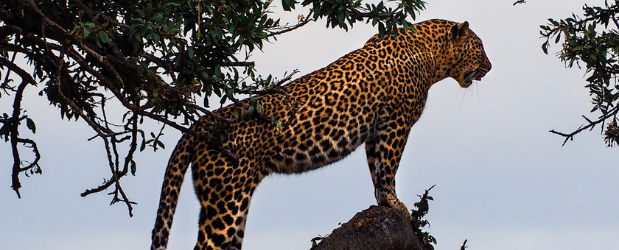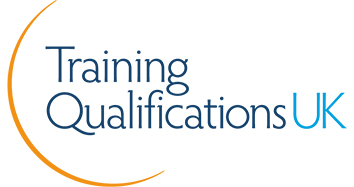
The main goal of wildlife rehabilitation is to provide professional care to sick, injured or orphaned wild animals. So that ultimately, they return to their natural habitat. If there is an individual animal that has recovered from injuries but not able to survive in the wild. They are placed in a rehabilitation or conservation facility.
Rehabilitation Organisations
The National Wildlife Rehabilitators Association (NWRA) was founded in 1982 at the first-ever National Wildlife Rehabilitation Conference. Attended by universities, zoos, veterinary hospitals, nature centres and humane societies. The NWRA was created to establish the standard of care for wild animals.
Within the UK, ‘wild animals’ are classed as those who are not normally domesticated. The Royal Society for the Prevention of Cruelty to Animals (RSPCA)’s main concern for wild animals is how they are treated. Whether humans cause unnecessary suffering and if action needs to be taken. Their focus is more on animal welfare, although, combined with the conservation of endangered species. Using scientific research and practical evidence, encouraging positive change in different ways.
As an example, the RSPCA has four wildlife rehabilitation centres within the UK. In 2016, an astonishing number of animals (17,202) were rescued and admitted to these centres.
Part of the RSCPA’s role is to rescue wild animals being kept as pets or circus animals, which is now illegal in the UK. Also, they respond to calls to rescue and rehabilitate animals that have been caught in illegal traps, poisoned, or illegally traded. They do this by using trained Animal Welfare Officers and Inspectors to the places where the animal is at risk. Also, spend time raising awareness of animal welfare issues, by providing information and advice to the general public. Influencing those who make policy decisions about wild animal welfare.
If you are someone who has a genuine love for animals and their welfare, a career in wildlife rehabilitation could be for you.

What kind of Careers are there in Wildlife Rehabilitation?
Positions within wildlife rehabilitation are available both on volunteer and salaried basis. This could be anything from working in a veterinary setting, charity, kennel, or training as a Zoologist.
Wildlife Rehabilitators can work for various Governmental agencies, non-profit groups, Aquariums, Zoos, and humane ocieties. Some rehabilitators choose to specialise in a specific field such as birds, reptiles, amphibians, or larger, more predatorial animals. Most rehabilitators gain experience working with a wide range of different animal species before focusing their interest in a specific area.
There is also the option to work with specialised emergency response teams, travelling to areas where animals are in distress. The areas to which they are dispatched can include locations affected by wildfires, hurricanes, or oil spills. Typically, Wildlife Rehabilitators work where animals require help due to human acts. Such as road traffic incidents, destruction of wildlife habitat through construction, poisoning, or entanglement in fences, traps, and fishing lines.
Higher levels of wildlife rehabilitation centres often work abroad, in places where wildlife habitats are under threat. One such organisation, Conservation Africa is a project that works on the rehabilitation and release of wild animals. They offer placements at a South African Rehabilitation Sanctuary, surrounded by some of the continents most iconic wildlife. Whether you are bottle-feeding a rhino calf or helping Veterinary Nurses treat wounded animals. If you have a love for African animals, this could be a potential employer for you.

What skills do I need to work in Wildlife Rehabilition?
Someone who works in wildlife rehabilitation usually has a love for animals. With the commitment needed to work in wildlife rehabilitation, without this passion, you would burn out very quickly.
To be a Wildlife Rehabilitator, you need to be caring and empathetic, with a good level of physical fitness. Being physically able means that you would be able to assist with the transportation of animals. As well as cleaning up after them.
A good level of attention to detail is essential to be able to spot behavioural changes in animals, and also notice if they become sick and then worsen quickly. Someone who wishes to work in wildlife rehabilitation needs to have an interest in helping, they need to be prepared to complete undesirable tasks.

How can I Start my Wildlife Rehabilitation Career?
To become a Wildlife Rehabilitator, you do not actually need any formal qualifications or a degree. However, for some paid positions abroad, you would need an undergraduate degree in a related subject, such as Veterinary Nursing. Some countries may also expect you to have a specific level of education certification or have passed certain exams before issuing you with a license to rehabilitate wildlife.
Most successful Wildlife Rehabilitators have background knowledge or experience in a related subject such as Ecology or Land-based Science. Wildlife rehabilitation is still an emerging field and a lot can be learned on the job, but the more preparation you have, the more likely you are to obtain a paid position.
There are some useful hands-on skills to possess. Such as knowledge of wild animal behaviour, basic wound management, animal rescue techniques, and the ability to identify and use basic first aid or medical supplies including bandage materials, syringes, and needles.
Demonstrating your experience working with wildlife or within rehabilitation would be desirable for most potential employers. The best way to gain experience is to volunteer, you could volunteer at Zoos, Aquariums, or Non-profit Organisations. The other way to gain experience would be through a placement. Placements are available on some animal-related courses, such as a Zookeeping Level 3 Diploma, offering you one week’s practical training within a zoo environment.

Study Online
Stonebridge Associated Colleges is one of the UK’s leading distance learning providers. Offering many animal care related courses, including courses specified towards Wildlife and Wildlife rehabilitation. These courses give you the necessary background information to kickstart your career in Wildlife Rehabilitation.
A Wildlife Rehabilitation Studies Diploma offers you the understanding of how to remove wild animals from immediate danger and then handling them in a way that causes minimal stress.
Also, there is an African Wildlife and Conservation Studies Diplomaon offer. Providing you with knowledge of big cats, primates, birds, and exotic African predators, exploring animal study techniques like Scat analysis and waterhole counts. You will also gain knowledge of the impact of human populations, deforestation, and poaching.
An Access to Higher Education Diploma (Land Based Science) would teach you the fundamentals of Ecology, the environment and conservation. By studying the core science in relation to the natural work, this course wil teach you the importance of the balance nin nature and how any imbalance can cause a knock-on effect, impacting on envirments, animal populations and even crop yields.
As these courses are offered entirely online, it gives you the freedom to study around your already established schedule. From the comfort of your own home, you’d be gaining essential knowledge in Wildlife, whilst control of the pace of your learning.
Find out more about Wildlife Rehabilitation by clicking below.






Leave a Reply